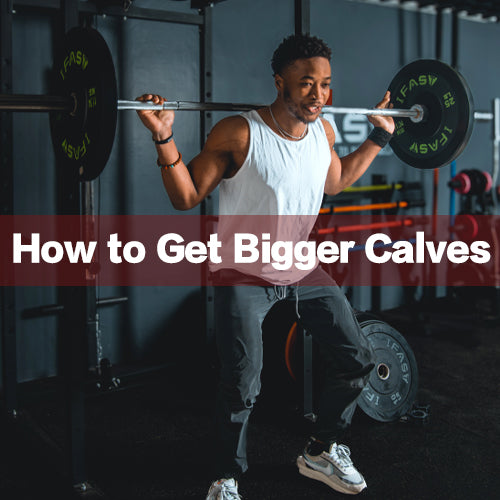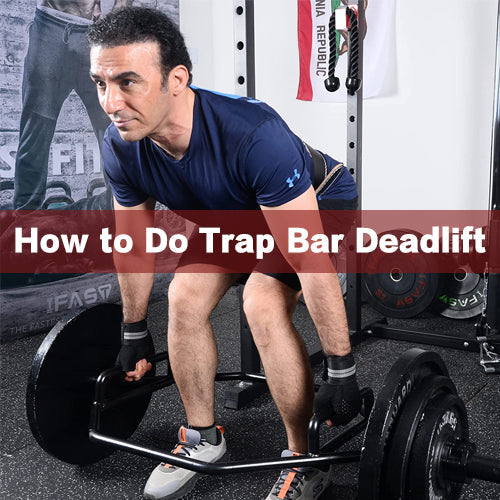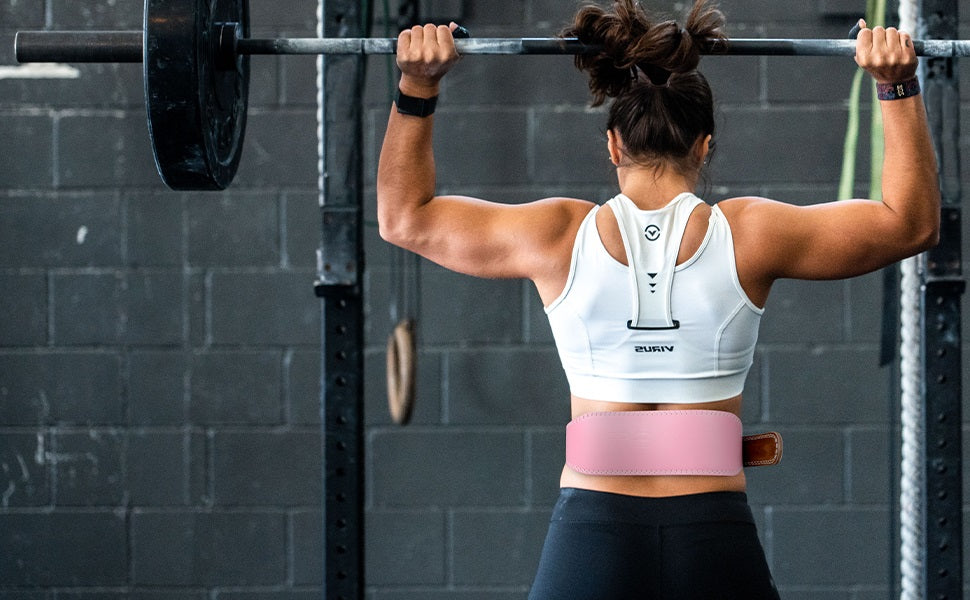
In the world of weightlifting and strength training, the use of lifting belts is a topic that often sparks debate. Some swear by them as essential tools for maximizing performance and preventing injury, while others question their necessity and effectiveness. So, what exactly does a lifting belt do, and should you incorporate one into your training routine? How to choose the right belt that suits you? Let's dive deep into the science and practicality behind lifting belts to find out.
Here you will know:
- Understanding Lifting Belts
- Mechanism of Action
- Benefits of Using a Lifting Belt
- When to Use a Lifting Belt
- What Exercises Require a Lifting Belt
- How to Wear a Lifting Belt
- Choosing the Right Lifting Belt
- Caring for Your Lifting Belt
- Common Misconceptions About Lifting Belts
- Incorporate a Lifting Belt into Your Training Routine
Understanding Lifting Belts
A lifting belt is a wide, sturdy belt worn around the waist during weightlifting exercises. It is made of leather or nylon and features a buckle or fastening mechanism to secure it in place. The primary purpose of a lifting belt is to provide support to the lower back and core, promoting better posture and stability during heavy lifts.
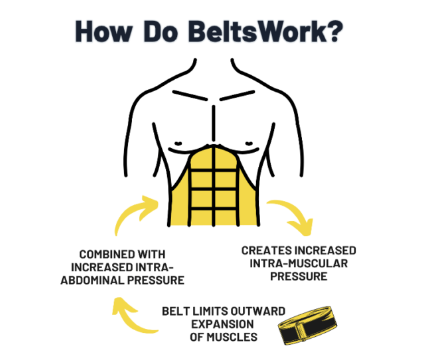
Mechanism of Action
When you engage in heavy lifting, particularly exercises that involve axial loading of the spine (where the weight is placed on the spine), such as squats and deadlifts, the muscles of the core and lower back are responsible for stabilizing the spine and maintaining proper posture. But, as the load increases, these muscles may become fatigued, leading to compromised spinal alignment and increased risk of injury.
Here's where the lifting belt comes into play. By cinching around the waist, a lifting belt creates intra-abdominal pressure, which acts as a supportive mechanism for the spine. This increased pressure helps to stabilize the spine and reduces the compressive forces acting on it during heavy lifts. Additionally, the lifting belt can serve as a tactile cue to remind lifters to brace their core muscles, further enhancing spinal stability.
Benefits of Using a Lifting Belt
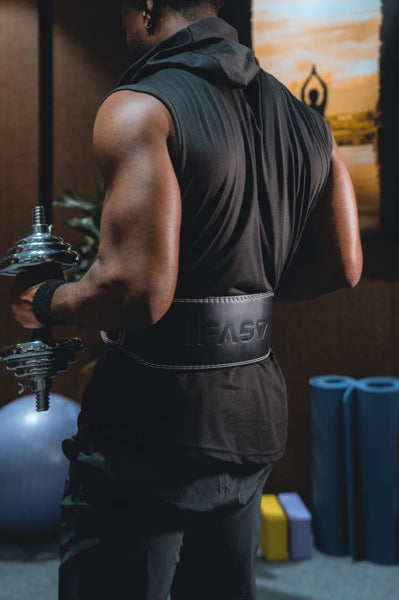
Using a lifting belt can offer several advantages to weightlifters and strength athletes:
Enhanced Spinal Support: The primary benefit of using a lifting belt is the added support it provides to the spine, reducing the risk of spinal flexion and injury during heavy lifting.
Increased Intra-abdominal Pressure: By promoting the generation of intra-abdominal pressure, lifting belts can improve core stability and strength, leading to greater lifting performance.
Improved Performance: With greater spinal support and core stability, lifters may find that they can lift heavier weights or perform more repetitions with proper form, leading to improved strength gains over time.
Injury Prevention: By reducing the risk of spinal flexion and maintaining proper spinal alignment, lifting belts can help prevent injuries such as herniated discs, muscle strains, and spinal compression.
Psychological Confidence: For some lifters, wearing a lifting belt can provide a psychological boost, instilling a sense of confidence and security during heavy lifts.
When to Use a Lifting Belt
While lifting belts can offer significant benefits, they are not necessary for every lifter or every exercise. It's essential to use lifting belts and understand when they can be most beneficial.
During Heavy Compound Lifts: Lifting belts are most used during heavy compound lifts such as squats, deadlifts, and overhead presses, where the spine is subjected to significant axial loading.
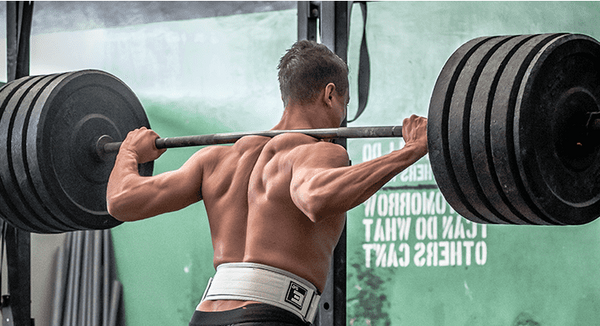
When Lifting Near Maximal Loads: If you're lifting at or near your maximal capacity, especially during sets with low repetitions, a lifting belt can provide added support and stability.
When You Have a History of Lower Back Issues: If you have a history of lower back pain or injury, wearing a lifting belt can help reduce the risk of exacerbating existing issues and promote safer lifting mechanics.
During Strength Training or Powerlifting Competitions: Many strength athletes and powerlifters opt to wear lifting belts during competitions to maximize their performance and cut the risk of injury.
What Exercises Require a Lifting Belt
While weight lifting belts can provide valuable core support and stability for a variety of exercises, they are most commonly used and recommended for certain key compound lifts that place significant stress on the spine and core musculature.
Squats
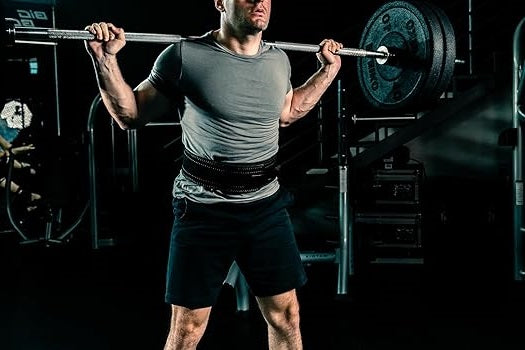
Whether you're performing back squats, front squats, or any of their variations, wearing a lifting belt can help maintain a rigid, upright torso position and prevent excessive spinal flexion under heavy loads. The belt allows you to maximally brace your core to support the weight.
Deadlifts
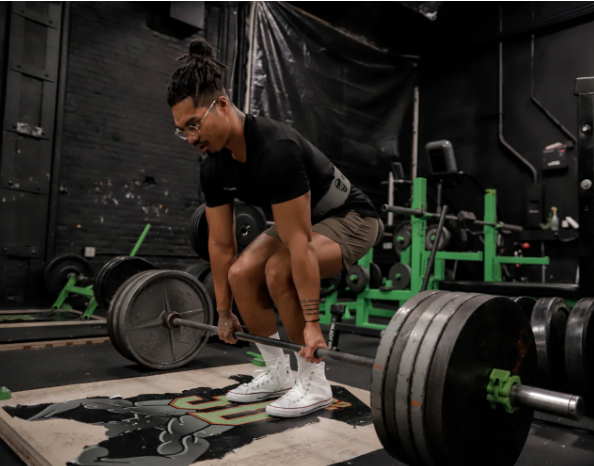
During deadlifts, your spine has to support an enormous amount of compressive force as you lift the barbell from the floor. A lifting belt increases intra-abdominal pressure, minimizing strain on the spinal erectors and low back muscles.
Overhead Presses
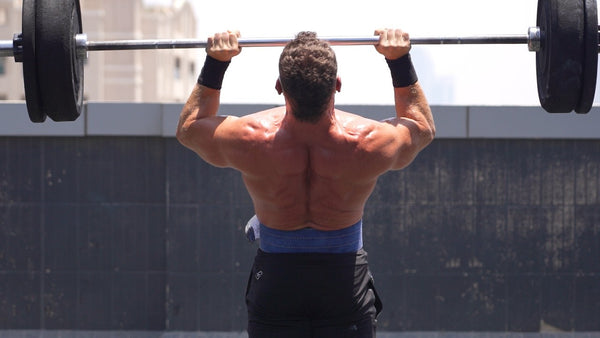
With weights being pressed directly overhead, it's crucial to maintain a rigid, upright body position. A belt helps keep your core braced and back arched to avoid excessive lumbar rounding or hyperextension.
Cleans and Snatches

The explosive nature of the Olympic lifts places immense forces on the body. Wearing a lifting belt allows you to transfer that force effectively while keeping your core stable and preventing injury.
Barbell Rows
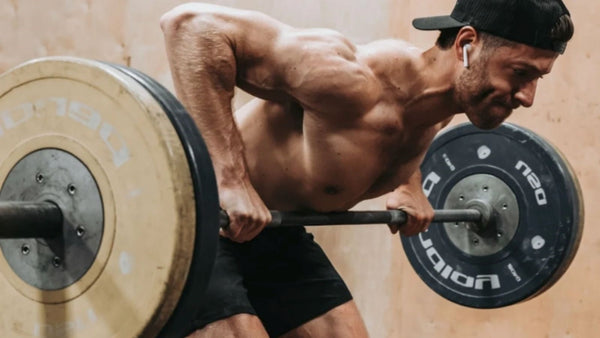
Heavy barbell rows, especially those performed bent over, require significant core and spinal stabilization. A belt can help maintain a neutral spine position and prevent rounding of the lower back.
How to Wear a Lifting Belt
Wearing your lifting belt is as important as choosing the right belt in the first place. Improper positioning or fit can cut the belt's effectiveness and even cause discomfort or injury. Follow these steps to ensure you're getting the most out of your lifting belt:
Positioning: Place the belt around your waist, above the hip bones and below the ribcage. It should sit on your lower back and abdominal area.
Proper Tightness: Tighten the belt but not . You should be able to take a deep breath and expand your diaphragm while still feeling support from the belt.
Brace Your Core: Before lifting, take a deep breath and brace your core muscles against the belt. This helps create intra-abdominal pressure and stabilizes your spine.
Gradual Belt Dependency: Avoid becoming reliant on a lifting belt. It's important to develop a strong core and back muscles through proper training and increase the weight without relying on the belt for support.
Safety Precautions: While a lifting belt can provide support, it does not guarantee complete protection against injuries. Always focus on proper form, warm up adequately, and listen to your body's signals. If you experience any pain or discomfort, consult a healthcare professional.
Choosing the Right Lifting Belt
Selecting the right lifting belt is crucial for optimal performance and safety.We will provide reference for your sale from the following aspects:
- Types of Lifting Belts
- Width and Thickness
- Buckle Types and Closures
- Fit and Sizing
- More Features to Consider
Types of Lifting Belts
Lifting belts come in various types, each catering to specific needs and preferences.
1.Leather Lifting Belt

Leather weightlifting belts are the traditional and most popular choice among powerlifters and strength athletes. They are known for their durability, rigidity, and ability to conform to the wearer's body shape over time.
| Pros | Cons |
|
|
2.Nylon Lifting Belt
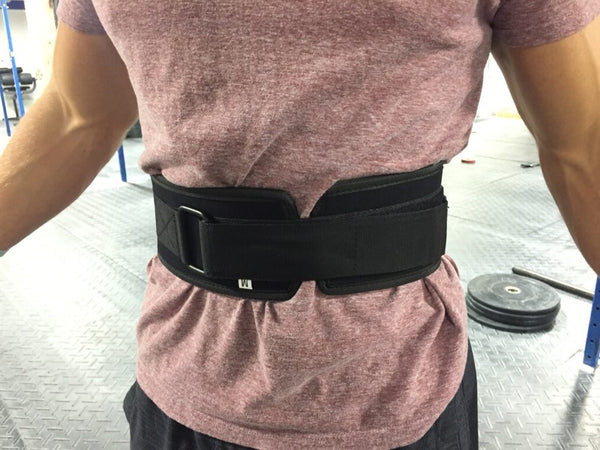
Nylon belts are a more affordable and lightweight alternative to leather. They are often preferred by Olympic weightlifters and CrossFit athletes who value mobility and breathability.
| Pros | Cons |
|
|
3.Velcro Lifting Belt
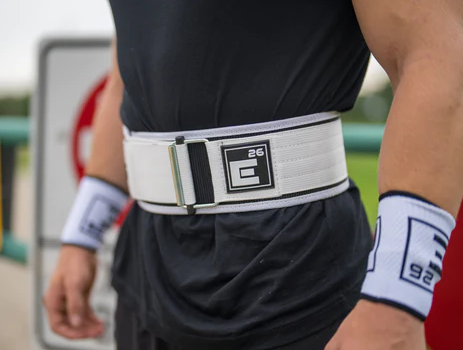
Velcro belts feature a hook-and-loop closure system instead of a traditional buckle or lever. This design offers quick and easy change, making them a convenient choice for many lifters.
| Pros | Cons |
|
|
4.Lever Lifting Belt
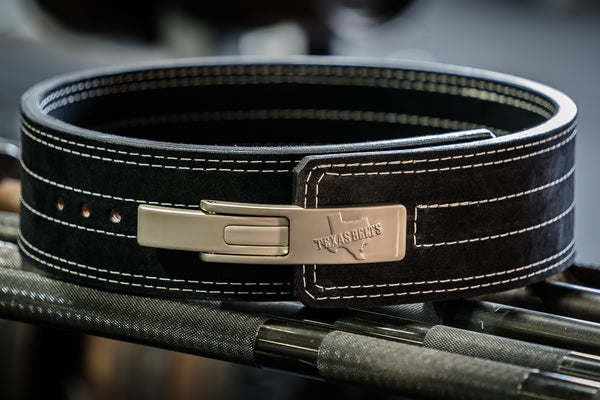
Lever belts incorporate a quick-release lever buckle for fast tightening and loosening. This makes them a popular option for lifters who value convenience and efficiency.
| Pros | Cons |
|
|
While these are the most common types of lifting belts, there are also specialized options like tapered belts, contoured belts, and hybrid belts that combine different materials. Ultimately, the best type of belt for you will depend on your specific needs, preferences, and lifting goals.
Width and Thickness
Another crucial factor to consider when selecting a lifting belt is the width and thickness. Belts range from 3 to 6 inches in width and 4 to 13 millimeters in thickness.
Width
4-inch belts are a popular choice for general strength training and powerlifting, as they provide ample support without being too bulky.
3-inch belts are a good option for those with smaller waists or for exercises that need a greater range of motion, such as Olympic weightlifting.
6-inch belts offer largest support but can be cumbersome and restrictive for some lifters.
Thickness
Thicker belts (10-13mm) are generally recommended for heavier lifts, as they provide more rigidity and support.
Thinner belts (4-6mm) may be more comfortable for lighter lifts or high-rep training sessions.
It's important to strike a balance between support and mobility when choosing belt width and thickness. A thicker, wider belt will offer largest support but may limit your range of motion, while a thinner, narrower belt will allow for greater mobility but may not provide as much support during heavy lifts.
Buckle Types and Closures
The buckle and closure system of a lifting belt are also important considerations, as they can affect the ease of use, security, and fit.
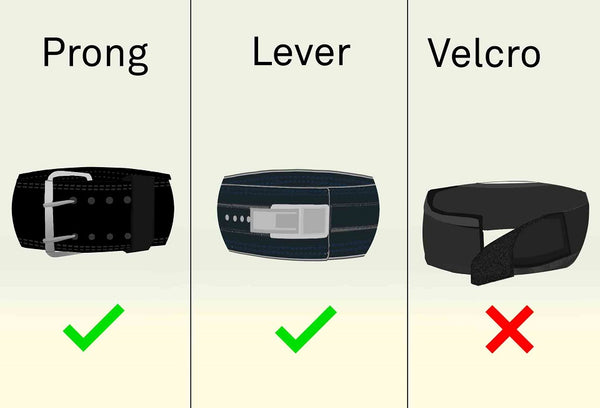
Prong Buckle
The traditional prong buckle is a tried-and-true option that allows for precise change and a secure fit.
Potential downside: Can be difficult to adjust and tighten on your own, especially with thicker belts.
Lever Buckle
Lever buckles offer quick and easy tightening and loosening, making them a convenient choice.
Potential downside: May not provide as precise of an change as a prong buckle.
Velcro Closure
Velcro closures are easy to use and adjust, making them a popular choice for many lifters.
Potential downside: Velcro can wear out over time and may not provide as secure of a fit as a buckle system.
When choosing a buckle or closure system, consider your preferences for ease of use, adjustability, and security. Some lifters prefer the precision and security of a prong buckle, while others value the convenience of a lever buckle or Velcro closure.
It is worth noting that It is best to use a lever or a single or double prong as these closures will firmly hold the belt in place when your core is exerting pressure against the belt. Velcro is weaker than levers and prongs and has a chance of opening during the exercise, which could potentially result in injury.
Fit and Sizing
Proper fit is crucial when it comes to lifting belts. A belt that is too loose will not provide adequate support, while a belt that is too tight can restrict your breathing and movement.
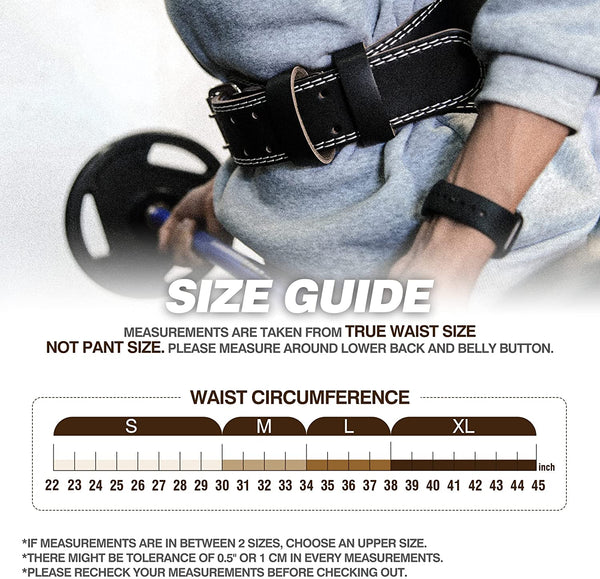
To find the right fit, measure your waist at your belly button, making sure the tape measure is snug but not tight. Many belt manufacturers will provide sizing charts based on your waist measurement, so be sure to consult these before making your purchase.
When trying on a belt, you should be able to comfortably fit two to three fingers between the belt and your body when it's tightened. This will allow you to take a deep breath and brace your core during lifts.
It's also important to consider how the belt will fit and feel during different exercises. For example, a belt that feels comfortable during squats may feel too restrictive during overhead presses or deadlifts.
More Features to Consider
While the materials, width, thickness, buckle, and fit are the most important factors when choosing a lifting belt, there are a few more features that some lifters may find beneficial:
Tapered Design: Some belts feature a tapered design, meaning they are slightly thinner at the front and thicker at the back. This can provide extra support for the lower back during heavy lifts.
Contoured Shape: Contoured belts are designed to better conform to the natural curve of your lower back, which can enhance comfort and support.
Breathable Lining: For those who tend to sweat a lot during their workouts, a belt with a breathable lining can help wick away moisture and keep you comfortable.
Remember, these additional features are not necessarily essential, but they can enhance the overall performance and comfort of your lifting belt.
Caring for Your Lifting Belt
To prolong the lifespan of your lifting belt and maintain its effectiveness, follow these maintenance tips:
Clean regularly: Wipe down your belt with a damp cloth after each use to remove sweat and dirt. Avoid using harsh chemicals or submerging it in water.
Avoid excessive bending: Lifting belts are designed to be rigid and provide support. Avoid excessive bending or folding, as this may weaken the belt over time.
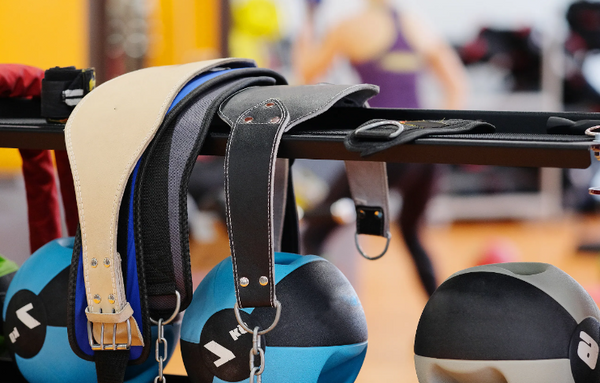
Store properly: Hang your lifting belt or store it flat in a cool and dry place. Avoid leaving it in direct sunlight or extreme temperatures.
Inspect for wear and tear: Regularly check your belt for signs of wear, such as fraying, cracks, or loose stitching. If any damage is detected, consider replacing the belt to ensure safety.
Learn More: Traveling With Your Lifting Belt: A Guide to Stay Fit On-The-Go
Common Misconceptions About Weight lifting Belts
Misconception #1: Lifting belts are only for elite lifters. Reality: Belts can benefit lifters of all levels by providing core support and stability during heavy lifts.
Misconception #2: Belts are a crutch for poor form. Reality: Proper bracing and form are required to get the full benefits of a lifting belt.
Misconception #3: Belts prevent core development. Reality: Using a belt correctly requires intense core engagement and can improve core strength over time.
Misconception #4: You should wear a belt for every exercise. Reality: Belts are generally only needed for heavy compound lifts, not lighter isolation exercises.
Misconception #5: Any belt will work fine. Reality: Investing in a high-quality, properly fitted weightlifting belt is important for safety and effectiveness.
Incorporate a Lifting Belt into Your Training Routine
- Assess if you truly need a lifting belt based on your lifting goals and lower back health.
- Choose a suitable lifting belt based on material, width, closure mechanism, and fit.Our IFAST Leather Lifting Belts are your best choice
- Use the belt for heavy compound lifts like squats, deadlifts, and overhead presses.
- Position the belt firmly around your waist, just above the hip bones and below the ribcage.
- Tighten the belt snugly but not excessively, allowing for proper breathing and support.
- Brace your core by creating intra-abdominal pressure before each lift.
- Gradually progress your training and develop core strength to reduce reliance on the belt.
- Maintain proper form and technique regardless of wearing a belt.
- Regularly reassess your need for a lifting belt as your strength and stability improve.
Conclusion
A lifting belt can be an invaluable tool for weightlifters and strength athletes, providing support, enhancing performance, and reducing the risk of injury. By understanding the benefits, different types, and proper usage techniques outlined in this guide, you can make an informed decision when selecting and using a lifting belt. Remember, while a lifting belt can offer support, it should be used in conjunction with proper technique, core training, and fitness.

